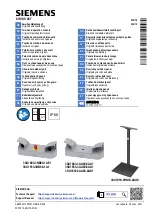
DEIMOS GERMANIUM FUZZ
23
ENCLOSURE LAYOUT: MAIN & FOOTSWITCH PCBS
Why solder everything inside the enclosure before testing it?
“Rock it before you box it” is conventional wisdom in pedalbuilding, and you’ll often hear it
recommended that builders should test the circuit before putting everything inside the enclosure.
However, Aion FX projects are designed to be extremely easy to remove from the enclosure for
troubleshooting, with no desoldering required—so with these kits, it’s actually much easier to “box it
before you rock it”.
If you’ve read the documentation carefully and followed all the instructions, there’s a good chance you
will get it right the first time!
125B
After all the components are affixed to the enclosure as
shown on the previous page, place the main PCB on top of the
potentiometers and toggle switches as in the diagram to the left.
You may need to adjust the position of the potentiometers and
toggle slightly if they are not aligned straight.
Once all of the pins are through their holes and the PCB is laying
flat, solder each of the pins from the top. Be careful not to touch
any of the surrounding components with the soldering iron.
After you’ve finished soldering the pots,
clip the leads as close
as you can to the main PCB
. The input/output PCB overlaps
them and you need to avoid any of the components shorting.
(The toggle switch lugs do not need to be clipped.)
Next, move to the footswitch board and solder the 3PDT switch.
The LED is last. Before soldering the LED, double-check to
make
sure the flat side of the LED is facing to the right
, as shown in
the diagram, and that the short leg is coming through the pad on
the right. It won’t work if it’s turned the other way. Then, clip the
leads of the LED.









































